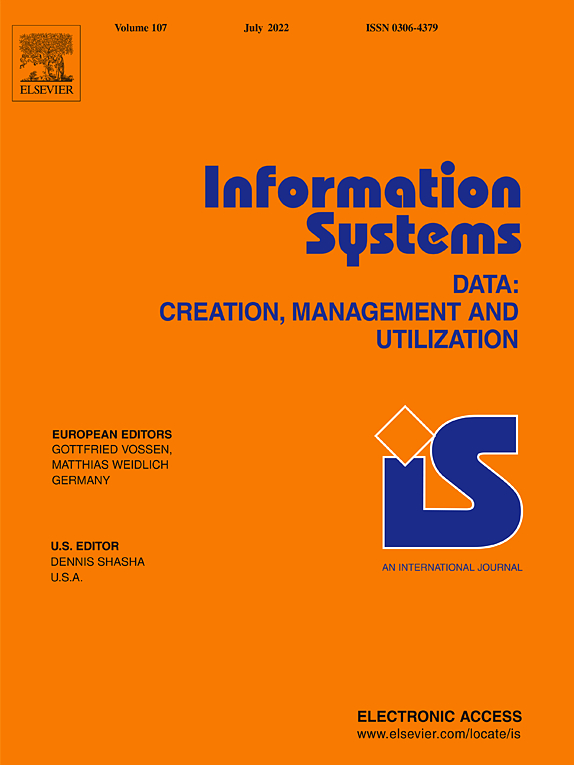IFC EDBD/Aims and Scope
A K-partitioning algorithm for clustering large-scale spatio-textual data
Information system for image classification based on frequency curve proximity
Partitioning road networks using density peak graphs: Efficiency vs. accuracy
Verifying goal-oriented specifications used in model-driven development processes
Skewed distributions in semi-stream joins: How much can caching help?
Exploratory product search using top-k join queries
Result Merging for Structured Queries on the Deep Web with Active Relevance Weight Estimation
TopPI: An efficient algorithm for item-centric mining
Influence-based Twitter browsing with NavigTweet
Event log imperfection patterns for process mining: Towards a systematic approach to cleaning event logs
Preface
Approximate furthest neighbor with application to annulus query
Vector-based similarity measurements for historical figures
Improving matrix-based dynamic programming on massively parallel accelerators
A polygraph test for trustworthy structural similarity
An empirical evaluation of intrinsic dimension estimators
Mining Urban Data (Part C)
Crowdsourcing turning-restrictions from map-matched trajectories
Never drive alone: Boosting carpooling with network analysis
Dynamic route planning with real-time traffic predictions
Traveling time prediction in scheduled transportation with journey segments
Forecasting smog-related health hazard based on social media and physical sensor
Crowdsourcing emergency data in non-operational cellular networks
An on-line algorithm for cluster detection of mobile nodes through complex event processing
Efficient techniques for time-constrained information dissemination using location-based social networks
MyWay: Location prediction via mobility profiling
Shaping City Neighborhoods Leveraging Crowd Sensors
Preface to BPM 2015
A framework for visually monitoring business process compliance
Controlled violation of temporal process constraints – Models, algorithms and results
Resolving inconsistencies and redundancies in declarative process models
Comparing textual descriptions to process models – The automatic detection of inconsistencies

